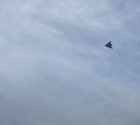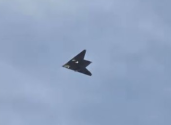You are using an out of date browser. It may not display this or other websites correctly.
You should upgrade or use an alternative browser.
You should upgrade or use an alternative browser.
Chinese UCAV/CCA/flying wing drones (ISR, A2A, A2G)
- Thread starter VESSEL
- Start date
The blogger's words are: I just saw it on Rednote, can I successfully report it?
The text below the picture tells the story of GJ11 crossing the open sea from the East China Sea and flying once again into Japanese airspace. It took the Japanese Self Defense Forces one minute to recognize it, and then GJ11 activated anti electromagnetic interference, causing the Japanese radar to smoke. The following sentence is that the author believes that the defeated country does not have any so-called airspace, so why protest.
the above
——
I don't know if there is a definite event, it could also be a fabricated story
Additionally, the writing style and content are somewhat nationalistic
JSDF is usually pretty prompt about declaring drone/ship/plane sightings, if this is true perhaps they'll post about it.
The GJ-11, like most stealth UAVs, is also one of the most difficult aircraft in existence to observer via radar given its smaller size and simpler geometry than existing stealth aircraft around the world. Chinese or American radars would have some trouble detecting these stealth UAVs. So unless the GJ-11 was using a LL to enhance signature during peacetime or it was in full stealth configuration but detected literally only 10s of km away from the radar site (it is claimed this occurred within Japanese airspace note not ADIZ after all so this is well within 10s of kms).
Whats more likely is this poster made all that up. Such an incident would risk unnecessary tension during a time China is letting Trump do his thing.
Whats more likely is this poster made all that up. Such an incident would risk unnecessary tension during a time China is letting Trump do his thing.
You need to read the fine prints. The OP here is reporting the post for being Jai China BS that the recent government mandate is trying to crack down on.
by78
General
An academic paper on aerial combat algorithms used by combat drones. Unpredictable and sudden movements of enemy fighters present a challenge to existing algorithms in predicting their trajectories. The proposed solution calls for using image recognition to track movements of control surfaces of enemy fighters to better predict their trajectories.














They are certainly talking like 沧州人It looks like a GJ-11, or a mouse cursor. It was allegedly spotted in Cangzhou (沧州).





